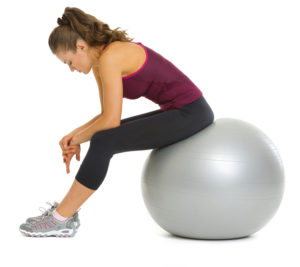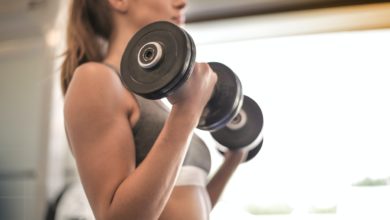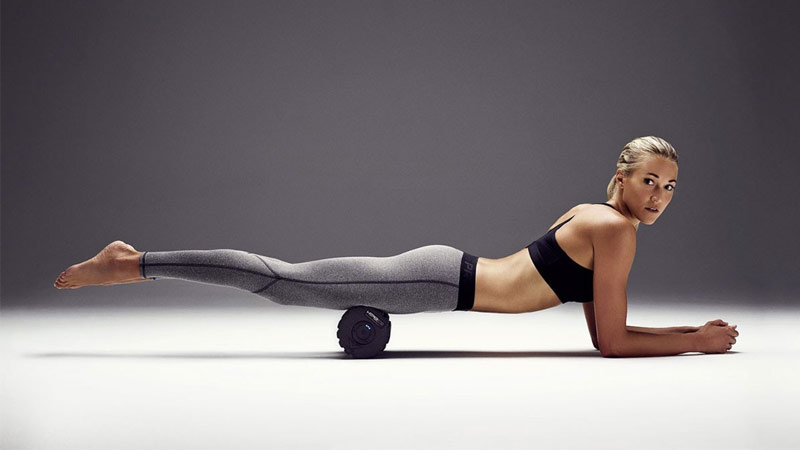
Active Recovery: What It Is and How to Nail It
Active recovery is used by athletes, figure competitors and everyone else in between to optimize repair, regeneration and accelerate performance. Here’s how to use it…
You’ve been working hard in the gym for a while now. At first your performance was improving at double time… but now as each week passes you’re noticing that your upward trajectory is slowing down. Not only that, your mood, motivation and general love of the gym are starting to taper off too.
We can’t have that girls can we!
Don’t worry, all that’s happening is you’re due a bit of rest time. You need to start thinking about scaling down the intensity and recovering in order to let your body repair itself. There’s only so long you can smash the gym for before your body starts to fight back.
That’s where active recovery comes in.
And this is everything you need to know about it…
Article preview:
- Training-recovery – Why rest is necessary to get better
- What is active recovery?
- What methods of active recovery work best?
The Importance of Recovery for Optimal Progress
Without proper recovery you’ll end up tired, unmotivated and burnt out.
Fitness is all about managing how hard you work out in the gym and how well you allow your body to recover. On one side of the coin you’ve got the importance of training; you’ve got to push yourself to improve. And on the other you’ve got recovery where you do all you can to prepare your body for the next workout.
Training and recovery is a trade off
- If you match your training intensity and recovery, your performance in the gym will rocket. You’ll get fitter and feel great.
- When recovery is too high and training intensity is low you end up disappointed with a lack of results. You aren’t pushing yourself enough.
- Training too hard without recovery will leave you feeling exhausted, unmotivated and ill. You’ve been working too hard and suffering symptoms of overreaching or overtraining.
When you work out you create a catabolic stimulus. This means you literally break down your body tissue by overloading your muscles, respiratory system and everything else you target during your workout.
This isn’t a bad thing though; you have to push yourself in order to provide your body with a stimulus for improvement.
But the more often this happens, the more your performance will suffer. Simply because your body can’t work as efficiently and you’re building up fatigue every time you hit the gym.
After a few weeks of hard training you’ll notice that your strength is starting to plateau and your overall fitness is starting to decrease.
You need a rest, girl.

Recovery is an important ‘anabolic’ process
It might sound confusing. You work hard in the gym to improve your performance but over time your performance gets worse.
But it’s just as natural part of the cycle. When you rest, your body puts in place a number of anabolic processes to build back muscle tissue, create more neural cells and improve its efficiency.
Without recovery, you can’t repair your body or build it back stronger.
Recovery leads to ‘supercompensation’
Train hard, recover and improve.
Great training is about balance. A comprehensive, expert training program will have you train hard for around 4-5 weeks. Over that time you wear your body down until performance starts to dip.
But when you then add in a recovery week or just a few days away from training you come back stronger, fitter and more motivated.
This is what’s known as ‘supercompensation’. You train hard, rest a bit and improve.
Online training programs such as Boss Shape and Burn do this phenomenally well and aren’t just your typical training guide. As a lower body specialist program it mixes up challenging and effective butt and leg workouts with just enough rest and recovery to help you achieve that beach-body in as little as 12 weeks.
You can check out how we got on during Boss Shape and Burn by reading our detailed review.
Even if it’s not a full week off training, a day or two here and there are more than useful in allowing recovery to take place. Even the American College of Sports medicine suggest having at least one day off training each week to help recovery.

A word on passive recovery
Just before we start to look at active recovery in detail, we just wanted to discuss passive recovery. Why? Because this is the fundamental aspect of good repair, regeneration and improvement.
No amount of active recovery will help you increase performance if passive elements aren’t in place.
Here’s what you need to know…
Ways to improve performance with passive recovery
- Reduce training load – the first and most important aspect of recovery is reducing the intensity of your workouts. It doesn’t matter what else you do, you won’t fully restore your body to its full potential if you’re still working out too hard.
- Sleep – getting a good, solid 7-8 hours of sleep each night accelerates recovery. It’s one of the most anabolic processes you can add to your lifestyle.
- Calories – Don’t drop your calories too low when you’re recovering. This is a time to refuel your body so make sure you eat enough to stimulate repair.
Tip: Passive recovery is the basis of a good recovery plan. Without managing your training, sleep and diet you just can’t improve and restore performance.
[/infobox]
What Is Active Recovery?
Active recovery involves light exercise to help you recover from periods of intense exercise.
Active recovery is a way of speeding up the anabolic healing process and regenerating after a few weeks of tough, intense workouts. It’s called ‘active’ as it involves physical activity rather than all-out rest methods such as with passive recovery.
It might sound strange to suggest activity as a rest tool but it’s not as intense as your normal workout routine. In fact, it’s very much about light to moderate movements that focus on duration as opposed to intensity.
Why is active recovery so important?
Studies have shown active recovery can help promote fitness by:
- Decreasing neuromuscular fatigue
- Improving glycogen replenishment
- Removing impurities and byproducts from the blood
- Removing excessive muscle fatigue
- Allows improvements in fitness to ‘shine through’
Introducing things like light workouts and easy physical activities help to teach the body to repair itself. They promote an increase in blood flow and nutrients and help to bathe your cells in energy.
There’s also a big psychological element too. Being able to go out for a long walk or have some fun with the kidsis a great way to de-stress and feel good about yourself.
And with stress being a large part of burn out and exhaustion, having fun is always a great idea.
The Best Active Recovery Methods
#1. Going for a long walk
There’s just something about walking that’s both relaxing and invigorating. The increase in blood flow and the release of feel-good chemicals help you relax, burn calories and shred through any fatigue you built up over the last few training sessions.
If you’re lucky enough to live near woodland or a park it’s also a great way of connecting with nature and enjoying some fresh air.
#2. Yoga
Many people think yoga is nothing more than a spiritual slow dance. But they’d be wrong. The fluid and controlled posing combined with rhythmic breathing helps to slow down your heart rate and de-stress.
Your breathing and heart rate are directly linked. When you control your breathing your heart rate naturally decreases, getting rid of stress hormones as it does so.
#3. Swimming
The great thing about swimming is it’s a low-impact way of keeping active. If you’re a runner who’s pounding the sidewalks every day or a woman that weight trains a few times a week, you need to let your joints and connective tissue heal as much as your muscles.
You can introduce active recovery to pool sessions by simply walking under water or challenge your cardio system by swimming repeated lengths at a moderate intensity.
#4. Light resistance training
You can still lift weights during active recovery days if you want to. Just keep the intensity light.
High rep workouts (bodyweight training works perfectly) is a good way to boost blood flow, nutrient delivery and feelings of wellness. It triggers an anabolic process by releasing nutrients to repair burned out muscle tissue.
A simple circuit of squats, curls, overhead presses and lunges helps to boost active recovery. Aim for 30 seconds of each exercise with plenty of rest between sets.
Just maybe skip this one if you’re feeling sore.
#5. Self-myofascial release
Using a foam roller to iron out tissue kinks and massage your muscles might seem like a painful exercise; but for many it’s just that little bit too painful.
Self-myofascial release on your major muscles helps to increase range of motion, release feel-good chemicals and potentially reduce muscle soreness too.
…as long as you can put up with the discomfort.
Summary – Use Active Recovery to Boost Results
There’s only so long you can push your body in the gym before it begins to fight back. Without the right amount of rest and restoration you’ll end up feeling tired, burned out and exhausted.
Active recovery methods help to promote relaxation and reduce fatigue so you can work even harder the gym. Just make sure you use methods you enjoy… and keep the intensity light.
Boss Shape and Burn – Fast Results With Effective Beach Body Workouts
Transform your physique and boost your confidence with this fitness model body workout system
Boss Shape and Burn is a premium 12 week workout plan written and delivered by the experts at Boss Workouts.
- Build sexy curves with detailed and effective workouts
- Eliminate fat by combining an effective diet with challenging gym sessions
- A specialized program based on fitness model workout programs
Boss Shape and Burn is hosted by elite fitness model Niki Zager – former cheerleader and respected fitness trainer.
The comprehensive system includes the following:
- 14 detailed workout videos for you to follow at the gym
- 73 page e-bbok on training and an 80 page ebook on nutrition
- Downloadable workout schedules
- Online nutrition and body composition calculators
- Lifetime access





